
The Essex Yeomanry was a Reserve unit of the British Army that originated in 1797 as local Yeomanry Cavalry Troops in Essex. Reformed after the experience gained in the Second Boer War, it saw active service as cavalry in World War I and as artillery in World War II. Its lineage is maintained by 36 Signal Squadron, part of 71 (Yeomanry) Signal Regiment, Royal Corps of Signals.

The Norfolk Yeomanry was a volunteer cavalry (Yeomanry) regiment of Britain's Territorial Army accepted onto the establishment of the British Army in 1794. After seeing action in the Second Boer War, it served dismounted at Gallipoli, in Palestine and on the Western Front during the First World War. Between the wars it converted to the Royal Artillery (TA), and served as an anti-tank regiment in France, the Western Desert, Italy and North West Europe during the Second World War. After the war it served as a TA air defence unit and then as an Army Air Corps unit.

The South Nottinghamshire Hussars is a unit of the British Army formed as volunteer cavalry in 1794. Converted to artillery in 1922, it presently forms part of 103 Regiment, Royal Artillery.
The Sussex Yeomanry is a yeomanry regiment of the British Army dating from 1794. It was initially formed when there was a threat of French invasion during the Napoleonic Wars. After being reformed in the Second Boer War, it served in the First World War and the Second World War, when it served in the East African Campaign and the Siege of Tobruk. The lineage is maintained by 1 Field Troop, 579 Field Squadron (EOD), part of 101 (London) Engineer Regiment (Volunteers).

The Westmorland and Cumberland Yeomanry was a Yeomanry Cavalry regiment of the British Army with its origins in 1798. The regiment provided troops for the Imperial Yeomanry during the Second Boer War and served on the Western Front in the First World War, latterly as infantry. The regiment converted to artillery in 1920 and served as such in the early years of the Second World War, before becoming part of the Chindits in Burma. Postwar it served as a gunner regiment until 1971 when the title disappeared.
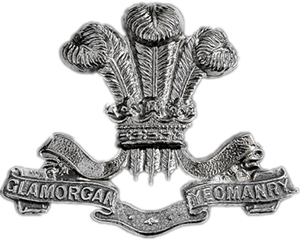
{{Infobox military unit |unit_name=Glamorgan Yeomanry |abbreviation= |image= |caption=Glamorgan Yeomanry cap badge |dates= 1797–1831
1861–1873
1901–present |country = Kingdom of Great Britain (1794–1800)
United Kingdom (1801–Present) |allegiance= |branch= Territorial Army |type=Yeomanry |role= |size= Regiment |command_structure= |equipment= |Past Commanders= |ceremonial_chief= |colonel_of_the_regiment= |notable_commanders=Col Windham Wyndham-Quin |identification_symbol= |identification_symbol_2= |nickname= |patron= |motto= |colors= |march= |mascot= |battles=* Merthyr Rising
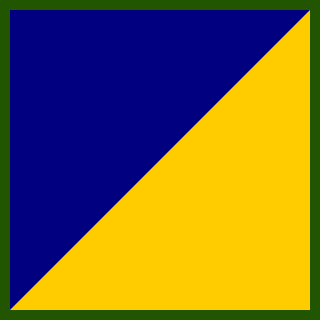
The Pembroke Yeomanry was an auxiliary regiment of the British Army dating back to 1794. It saw active service in the French Revolutionary War, the Second Boer War, World War I and World War II. Its lineage is maintained by 224 Transport Squadron, part of 157 (Welsh) Regiment RLC in the Army Reserve.
The Surrey Yeomanry was a unit of the British Army first formed as volunteer cavalry in 1794. It was reformed in 1901 and saw varied service in the First World War. During the interwar period, it converted to artillery and during the Second World War one of its regiments distinguished itself during the retreat to Dunkirk, saw action during the Second Battle of El Alamein, and also saw service in Sicily and Italy. Its other regiment served in East Africa, the Siege of Tobruk, and in Iraq and Persia. The regiment's lineage is maintained today by 2 Field Troop, 579 Field Squadron (EOD), part of 101 (London) Engineer Regiment (Volunteers).

The 1st Norfolk Artillery Volunteers was a unit of Britain's Volunteer Force raised in the County of Norfolk in 1859 as a response to a French invasion threat. It became part of the Territorial Force in 1908 and served under various designations as field artillery in Palestine during World War I, and as heavy anti-aircraft artillery in North Africa and Italy during World War II. It disappeared in a merger in 1955.

Mitcham Road Barracks is an Army Reserve centre in Croydon, London, with a history dating back to 1794.

The 1st Sussex Artillery Volunteers was a part-time unit of the British Army's Royal Artillery from 1859 to 1961. Raised as coastal defence artillery, the unit later served as field artillery in Mesopotamia during World War I, and in North Africa, Sicily, Italy and North West Europe during World War II. It carried out a number of roles in the postwar Territorial Army.

Stockport Armoury is a military installation in Stockport, Greater Manchester, England. It is a Grade II listed building.
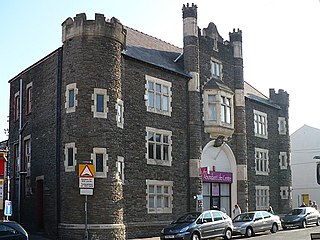
The Lower Dock Street Street drill hall is a former military installation in Newport, Wales.

The St Paul's Street drill hall is a military installation in Huddersfield, West Yorkshire. It is a Grade II listed building.
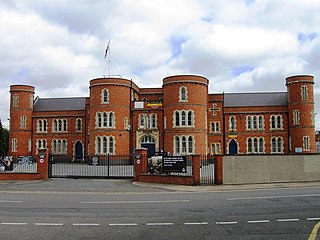
The Clare Street drill hall is a military installation in Northampton, Northamptonshire. It is a Grade II listed building.
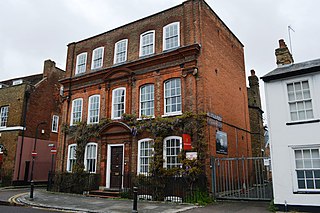
Yeomanry House is a military installation in Hertford. It is a Grade II* listed building.

The King's Road drill hall, sometimes referred to as the Old Cavalry Barracks, is a former military installation in King's Road in Bury St Edmunds. It is a Grade II listed building.

The Kings Avenue drill hall, often referred to as Melbourne House, was a military establishment in Clapham.

The St Mary's Road drill hall is a former military installation in Southampton. It is a Grade II listed building.
The 1st Cinque Ports Rifle Volunteers was a part-time unit of the British Army first raised from the Cinque Ports of Kent and Sussex in 1859. It later became the 5th Battalion of the Royal Sussex Regiment. During the First World War, it served on the Western front as pioneers, seeing a great deal of action at Aubers Ridge, the Somme, Ypres, and in Italy. In the Second World War, both the battalion and its duplicate served in the Battle of France and were evacuated from Dunkirk. The 5th Battalion then fought at the Second Battle of El Alamein while its duplicate unit served as an anti-aircraft regiment in the campaign in North West Europe. Neither unit was reformed after the war.


























